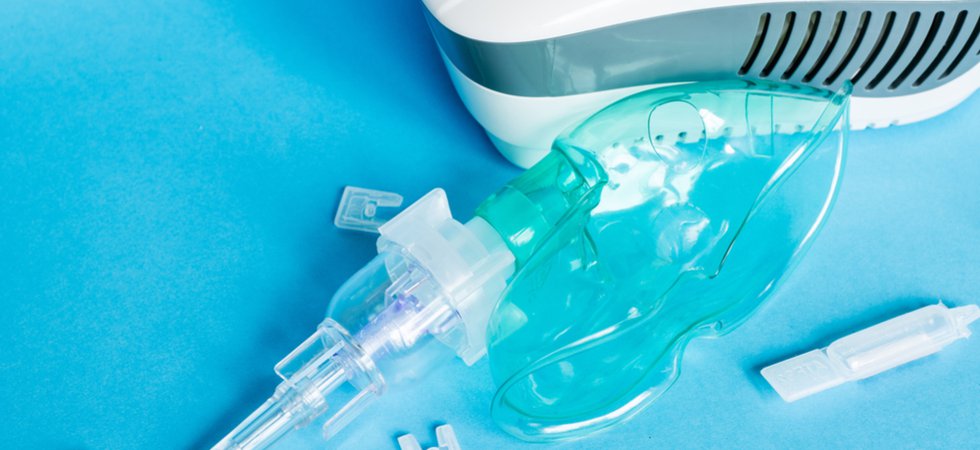Marie Crane, Dow Medical Solutions, examines how versatile LSRs can help medical device makers reduce time and cost for new product development.

Wearable Inhaler
As the wearable medical technology market is growing, liquid silicone rubber (LSR) material science is rapidly advancing with it. The industry shift toward wearable health devices and externally communicating medical tools has led to higher growth in both traditional rubber applications and newer ones. The unique properties of LSRs – and other silicone materials – have played an important role to reduce time, cost and approval processes for development of new medical devices and drugs for decades because of their safe long proven history in the market
Accepted for a variety of medical uses since the early 1950s, silicone materials have two properties that are critical for driving industry innovation: biocompatibility and biodurability. Silicone elastomers are the material of choice for long-term medical implants since they can last for more than 30 years – far longer than any other material. Because silicones are inert, they are biocompatible with the human body, with no adverse effects on human health.
Extensively studied and approved by the US. Food and Drug Administration (FDA), the proven biocompatibility of silicone materials simplifies new drug and device approvals. They also offer a range of unique properties that no other class of polymer offers. For instance, LSRs offer properties not obtainable with organic rubber materials, especially heat resistance, extreme low-temperature flexibility, biological inertness, and an intrinsic capacity for.
LSR innovations
Recent advances in chemical formulations which improve injection molding processability of LSRs for the ongoing replacement of traditional materials in respiratory, external communicating and wearable monitoring devices, among others. Ideal for intricate designs and close-tolerance parts, LSRs are pumpable thermosetting silicone elastomers that can be processed by molding equipment.
In fact, LSR product development has resulted in the improved processing parameters to provide the greatest value and ease of use. The handling of LSR materials during injection molding is an inherently clean production process since the component chemicals are sealed within a closed system. Ambient air contacts the cured parts when they are removed from the mold, which limits exposure to the manufacturing environment. This also improves part quality, because contaminants can diminish physical properties of the cured rubber.
Liquid silicone rubbers are two-part, platinum-catalyzed elastomers with an operating temperature range between -40°C to 200°C, with short peaks up to 260°C. With post cure, LSRs offer a very low compression set and has improved durability over organic rubbers. These polymers are translucent, and can be pigmented to match many color requirements. New LSR formulations can cure at lower temperatures and have quick cycle times, which translates into quicker processing and greater throughput.
Next-gen LSRs from Dow Medical Solutions
A longtime leader in silicone science and product development, Dow Medical Solutions (formerly Dow Corning) recently introduced two new LSRs designed specifically for applications serving respiratory care, externally communicating devices, wearable monitoring and related components for medical device applications.
- Dow Corning QP1-5040 self-adhesive LSR is a translucent material that provides durable, primerless adhesion to resin substrates, such as co-polyester. Fast curing at temperatures that do not deflect the co-polyester components, this new LSR offers new options for device design flexibility.
- Dow Corning QP1-3340 LSR and Dow Corning QP1-3350 LSR are both two-part, platinum-catalyzed medical materials suitable for liquid injection molding. They enable reasonable cure times at low temperatures, which offer device designers more flexibility while allowing fast injection speeds at low injection pressures.
Due to the fact that the world’s aging population will more than double and people 65-plus will be by 2050, these new LSR products were developed with their needs in mind.[1] The aging population requires affordability, comfort and convenience in their medical supplies, and Dow is helping our medical device customers create cost-effective and innovative new products that meet those needs.
The future is now
Wearable technology is a case in point. Wearable fitness trackers, such as FitBit and Jawbone, are largely responsible for the expansion of the flexible wearables category. LSRs are an ideal fit for wearable devices worn under frequent outdoor sun exposure because they can handle a wide range of temperatures, moisture, ultraviolet light, and ozone without degrading. Wearable devices manufactured with suitable LSRs are unlikely to cause adverse skin reactions, even when they are worn for extended periods of time.
Medical device makers dedicated to exploring new directions and creating the next generation of medical device technology are paying close attention to the evolution of LSR material science. The LSR space is rapidly expanding with new and improved materials that are replacing more traditional materials with longer-lasting, more versatile, and cost-effective solutions. LSRs bring all the well-known advantages of silicone materials for medical device applications to bear, including safe, proven and consistent

